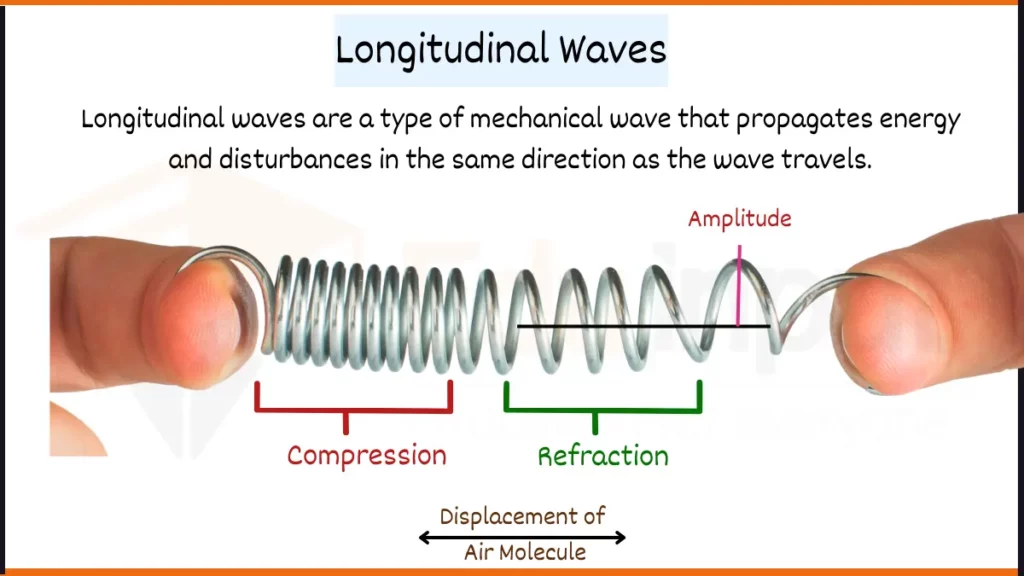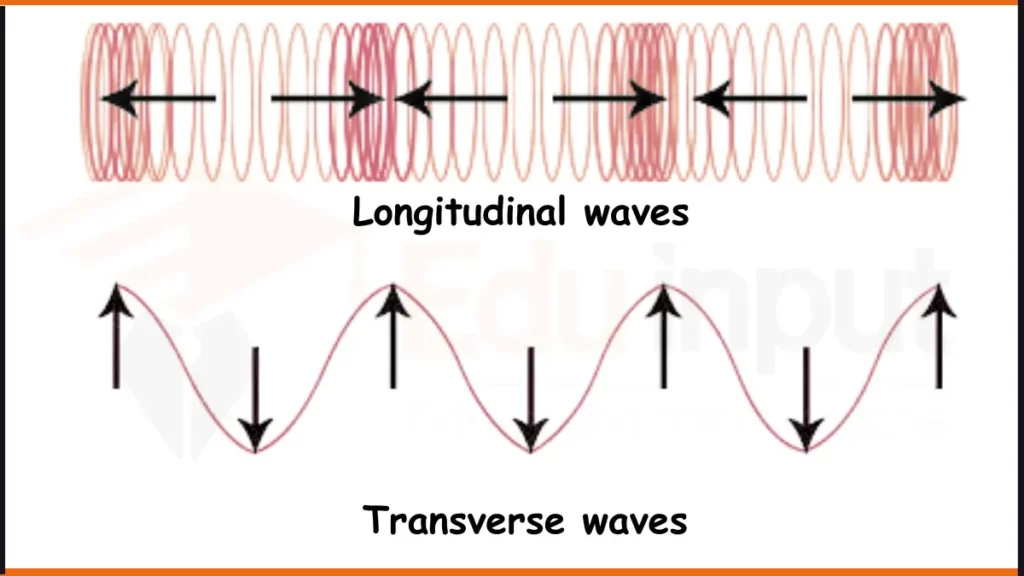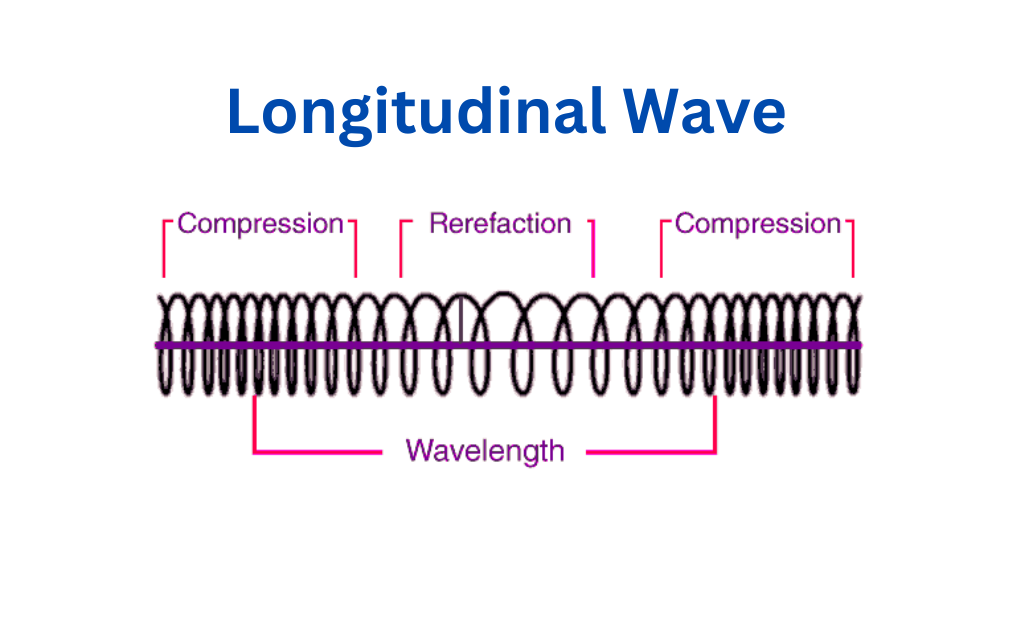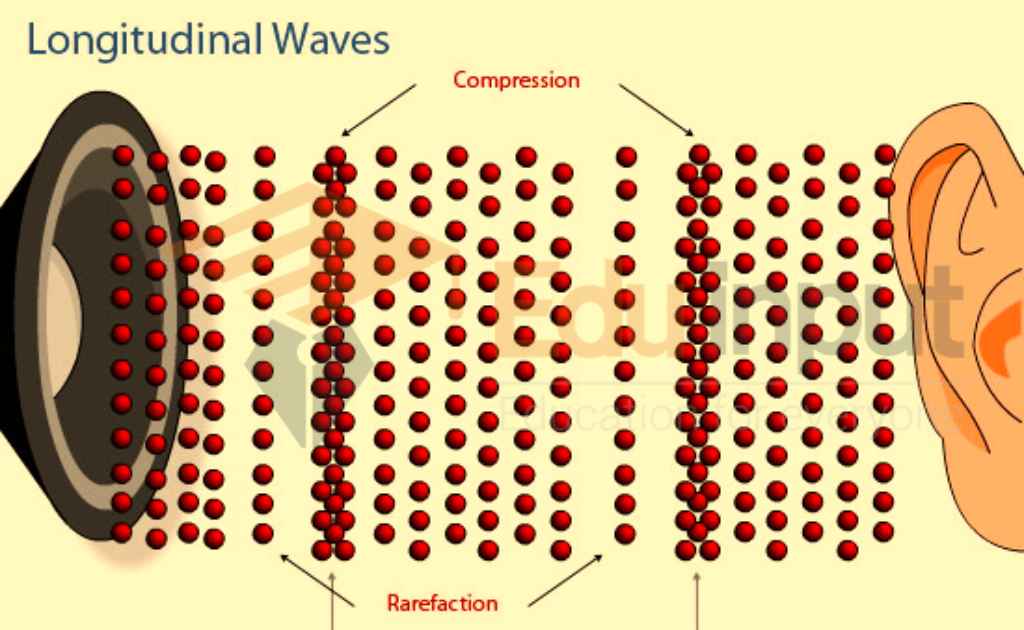Longitudinal Waves-Definition, Characteristics, Speed, and Formula
What are Longitudinal Waves?
Longitudinal waves are a type of mechanical wave that propagates energy and disturbances in the same direction as the wave travels. In these waves, the vibration of the medium is parallel to the direction of wave propagation. The displacement of the particles in the medium occurs in the same or opposite direction as the traveling wave.

Longitudinal waves require a medium to propagate, such as solids, liquids, or gases. The medium vibrates, and particles move back and forth, that is parallel to the wave’s direction. This back-and-forth motion is known as vibration. As the wave travels, it creates regions of compression and expansion in the medium, that’s why Longitudinal waves are also called compressional or rarefactional waves.
The properties of longitudinal waves include frequency, amplitude, and wavelength. Frequency refers to the number of wave cycles per unit of time. Amplitude is the maximum displacement of particles from their resting position. Wavelength is the distance between two corresponding points on adjacent waves. [1]
Sound waves are a common example of longitudinal waves. When you speak, longitudinal sound waves travel through the air. Seismic waves, caused by earthquakes or explosions, are another example. These waves travel through the Earth’s layers and can be detected by seismometers. Rayleigh waves are a type of surface seismic wave that rolls along the Earth’s surface.
Read Other Examples of longitudinal waves
In longitudinal waves, the particles of the medium vibrate parallel to the direction the wave travels, but in tranverse waves, particles vibrate perpendicular to the direction of wave propagation.

According to a study conducted by Dennison Bancroft, Longitudinal waves in cylindrical bars travel at a speed that depends on the bar’s diameter, Poisson’s ratio, and the wavelength of the wave. This speed can be calculated using a formula that takes into account these variables.
Characteristics of Longitudinal Waves
These are some important characteristics of longitudinal waves.

Compression
Compression is a region in a longitudinal wave when the wave particles are closest to one other.
Rarefaction
Rarefaction occurs in a longitudinal wave when the particles are the furthest away from each other.
Wavelength
The wavelength of a longitudinal wave is the distance between two successive locations. These places might be located between two compressions or between two rarefactions.
Amplitude
The greatest displacement of a particle from its rest position is defined as its amplitude. The amplitude of a longitudinal wave is the distance from the medium’s equilibrium position to compression or rarefaction.
Period and Frequency
The period is the time it takes the wave to move one wavelength. The number of wavelengths per second is the frequency of the longitudinal wave.
Speed of Longitudinal wave
The speed of a longitudinal wave depends on the properties of the medium through which it is traveling. Specifically, it depends on the elasticity (or stiffness) and the density of the medium. The formula for the speed of a longitudinal wave in a medium is given:
v = √(E/ρ)
where v is the speed of the wave, E is the elasticity (or stiffness) of the medium, and ρ is the density of the medium.
Equation for Longitudinal Waves
Equation for longitudinal waves is as same as equation for transvers waves.
s(x,t) = A sin(kx − ωt +ϕ)
In this equation:
- s(x,t) represents the longitudinal displacement from equilibrium at a specific location x and time t.
- A represents the amplitude of the wave.
- k represents the wave number.
- ω represents the angular frequency.
- ϕ represents the phase angle.
Forward Velocity
The forward velocity of a longitudinal wave (v) can be calculated using two equivalent formulas:
- v = λ/T where λ is the wavelength and T is the period.
- v = ω/k
Related FAQs
What is a longitudinal wave in physics?
Longitudinal waves are types of waves in which the displacement of the medium is in the same direction as the traveling wave.
What is amplitude in longitudinal waves?
The greatest displacement of a particle from its rest position is defined as its amplitude.
What is wavelength?
The distance between two consecutive points in a longitudinal wave is known as wavelength. These consecutive points can be between two compressions or between two rarefactions.
What are 3 examples of longitudinal waves?
Sound wave
pressure waves
ultrasound waves

 written by
written by 





Leave a Reply